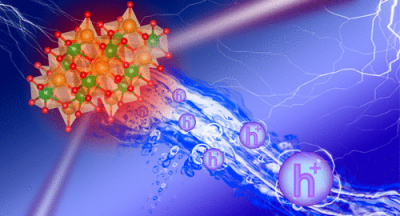An article by dr hab. Sebastian Mahlik, prof. UG and dr hab. inż Natalia Majewska from the Department of Condensed Phase Spectroscopy UG has been published in one of the most important journals devoted to chemistry - the Journal of the American Chemical Society. The researchers describe a discovery concerning the mechanisms of luminescence quenching in dielectrics doped with transition metal ions. The materials they study could find applications in smartphones or other mobile devices.
JACS is a journal that has been published for almost 150 years by the American Chemical Society. As of 2023, the journal has registered more than 300 million downloads of published articles and has an impact factor of 14.8. We talk to prof. Sebastian Mahlik about the research that led to publication in the prestigious journal.

- What discovery do you describe in the article?
Prof. Sebastian Mahlik: - In the article ‘Photoelectric Studies as the Key to Understanding the Non-Radiative Processes in Chromium Activated NIR Materials’, we describe the discovery regarding the mechanisms of luminescence quenching in transition metal ion doped dielectrics. Our innovative approach, using photoelectric studies, has provided an understanding of luminescence quenching phenomena and their temperature dependence. We have overcome the previously held belief that thermally activated luminescence quenching occurs directly between states of the dopant itself. Our research has shown that this process is related to the hitherto overlooked phenomenon of dopant ionisation, which, surprisingly, does not involve thermal activation of electrons from the dopant into the conduction band, but rather the formation of holes in the valence band. This discovery is fundamental in understanding the optical properties of luminophores and is crucial in the design of new materials, especially in the context of their potential applications.
- In the publication, you mention the potential practical use of the materials you have researched. Where could they find the application?
- The materials we are investigating could find applications as near-infrared (NIR) emitters and UV detectors. Compared to traditional sources of infrared radiation, such as incandescent or halogen lamps, our proposed NIR-pc-LED sources are distinguished by their smaller size, higher efficiency and lower operating temperature. Thanks to these features, they can be used in portable devices such as smartphones, opening up a wide range of practical applications. The new technologies will make it possible to monitor health, diagnose body fat composition, assess hydration levels and analyse the freshness and quality of food. In addition, the portable detectors will be able to identify undesirable substances such as pesticides, which will significantly improve food safety.
- The publication is co-authored by Taiwanese scientist dr Mu-Huai Fang. How did you establish your collaboration? Are you planning any further joint projects?
- Our collaboration with dr Mu-Huai Fang began more than eight years ago when, as a master's student of Professor Ru-Shi Liu from National Taiwan University, he was assigned to lead a research task within a joint Polish-Taiwanese project. Mu-Huai Fang's task was to synthesise luminescent materials and conduct and interpret structural studies. Our team focused on spectroscopic studies and modelling in the project. The way dr Mu-Huai Fang fulfilled his assignment is best demonstrated by the fact that our collaboration continues uninterrupted to this day, resulting in 30 joint publications. For the past three years, dr Mu-Huai Fang has been heading his own research group at the Research Center for Applied Sciences, Academia Sinica, with whom we are planning further research projects. Our future research will aim to further explore the nature of optical transitions in transition metal ion-activated materials. We also plan to intensively develop new research methods, as well as to look for application opportunities for the synthesised materials.
